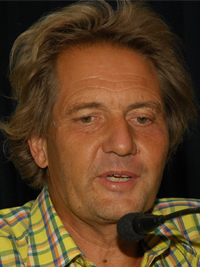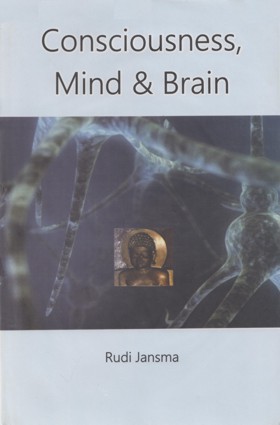We must always distinguish between two main categories of consciousness: the consciousness of the higher self, and a personal, egoic consciousness. The higher self is aware of the higher laws of the universe and takes notice of the disharmonies performed by the personal consciousness. The adjustment or process of restoration is known as karmic retribution. However the egoic consciousness of a living being does not have to be intelligent: most living beings have no intelligent mind (yet) on the level humans have an intelligent mind, because individual mind and intelligence only seem to develop properly after the five major sense organs and a lower, animal mind, have developed. Most living beings react on basis of the inherent properties of the senses they have developed - we would say instinctively - and not on their own individual discriminating mind. But because the individual mind, once it is sufficiently developed (by help from 'on high' - not God) has the potency to become omniscient and at one with the higher self.
We see in modern biology that simple organisms have a very simple nervous system or no nervous system at all - so they have no brain. But the higher they climb, the closer their consciousnesses approach the moment of acquiring a personal mind and mental consciousness. Parallel to this development we see the development, first of a very basic nervous system with a few ganglia (nerve cell clusters) in 'primitive' animals, i.e. those which represent the beginning stages of animal evolution, and a much extended development of mental activity and a brain structure in those which have developed five senses (higher animals and humans). So we can conclude that development of an personal mind and complex nervous systems go hand in hand. Therefore it seems legitimate to conclude that we have to distinguish between a higher consciousness and a higher mind (or we can call it a universal consciousness and universal mind), but that mind is so much limited in the most primitive beings that it can not express itself for and by means of the individual consciousness, which then is still uniquely focused on sense perception.
The difference with the present mainstream opinion in the western culture and the occult-scientific view is that both consciousness and intelligence existed previous to the nervous system and brain structures, and before physical complexity. Consciousness develops in the higher forms of life (animals, humans) in relation to the development of a physical nervous system. However the fact - according to the occult sciences - that even minerals and invisible beings are conscious living beings, indicates that consciousness is not an arising property of a nervous system and its complexity. So the conclusion is: Consciousness and intelligence and life were always; mind (diversification, projector of illusions and creator of māyā) arises at cyclic intervals within the universe in 'locations' (ātmas) in the universe; astral (subtle) or physical structures are built to provide the ātma or jīva[1] a fit vehicle on the material (either gross or subtle) level of existence. As this is done according to conscious cause and effect, and as there is only one conscious principle in the universe - consciousness per se - this consciousness when individualized through ātma + buddhi contained and contains the ultimate seed or potential initiative to both thought activity and the formation of physical structures like a nervous system and a brain. The sequence is Consciousness > Mind > Brain.
The mind does not disappear when the physical brain perishes. It only loses the function to take conscious action and attract or 'create' new individual karma. Only during physical embodiment the inertia of matter is large enough for a soul to form images of reality and practice according to them (i.e. ethics) and reach final liberation from all types of matter. After death the mind experiences the manifested universe as effects of what it learned and concluded from thinking during physical life - not more than that.
As humans are the only beings on this earth who have developed a complex self-conscious mind, we must conclude that the information for this complexity is transferred to the astral or etheric body of disembodied thinking beings. Astral matter must have the power of storing memory, and the memory is conscious in the subtle body. This occurs in beings with an developed active mind during mundane existence, so we may conclude that the finer bodies can harbor high complexity - or at least the information to produce high complexity when becoming physical.
The ultimate essence of both the manifested universe and the unmanifested universe is consciousness/ life. However concepts like 'life' and 'consciousness' are themselves parts of the manifested universe and we can therefore not know how to describe an unmanifested universe better that we can describe a living and thinking and feeling human being if we have only his or her mirror image. Because consciousness/ life exists eternally it is in its abstraction separate from all temporary material phases and energies of the manifested universe. Consciousness-life guides all processes by means of the inherent qualities of original substance (mūlaprakṛti lit. root-substance) in its many different phases or layers of elaboration. Every layer has its own 'seed' or primordial essence. Therefore 'substance', mūlaprakṛiti, is as essential as life and consciousness and can not exist separate from it. Ultimately there is no difference between matter (substance) in its most spiritual phase and consciousness-life, also called spirit. In the above we find all the ingredients we need to explain the relation between consciousness, mind and brain.
Spirit and matter are One.
 Dr. Rudi Jansma
Dr. Rudi Jansma
